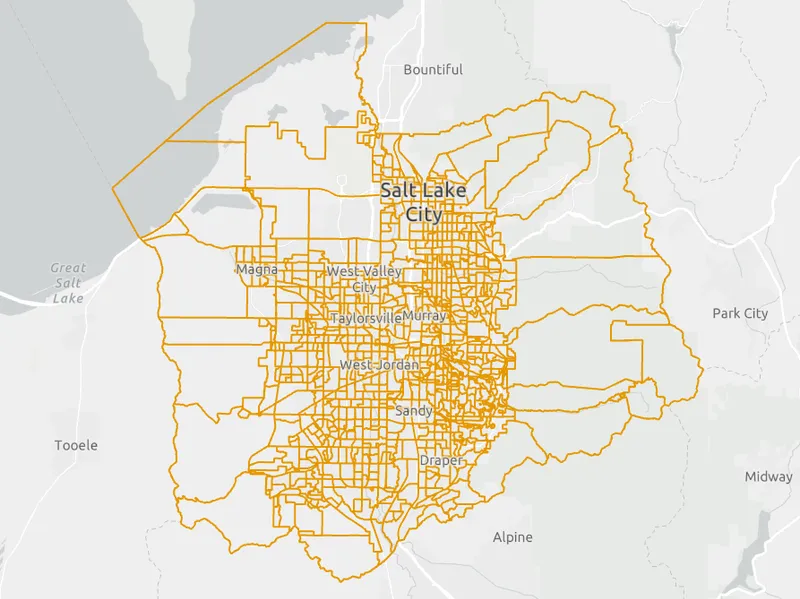With the cool winds blowing in and the birds flying south, fall is officially upon us. That means a few things: warm sweaters, yellow aspen leaves, and everyone’s favorite method of getting a free sticker: voting! Election Day will be on Tuesday, November 5th, 2024. If you aren’t yet registered, you can do so now on vote.utah.gov, opens in a new tab. Whether you vote by mail or in person, where you vote and who’s on your ballot is determined by geospatial data maintained by UGRC and local government authorities. UGRC might not be able to make the beautiful autumn hues of red, orange, and yellow stay longer than nature dictates, but we are charged with safekeeping the data that makes elections in Utah possible.
One example of these data are the digital polygon representations of voting precinct boundaries. Voting precincts are geographical boundaries drawn by Utah government authorities that determine in what district your vote will be counted in and which local elections you will participate in. These boundaries are determined by County Recorders and Clerks using a legislatively mandated set of rules. Each precinct must meet certain population requirements and account for voting blocks within that area. These are the voting precincts found in Salt Lake County:

As you can see, voting precincts vary widely in size and shape. Just as each voting precinct is unique, each county utilizes a slightly different schema to meet that county’s unique needs. Part of our mission as geospatial leaders in Utah is to “ensure a high level of coordination among Utah GIS users and effective, efficient use of GIS resources.” That’s why we work directly with County Clerks and Recorders to gather voting precinct data, adjust it to a standardized schema, ensure their spatial accuracy, and add them to a statewide dataset. The completed boundaries are then used in elections at all levels, including city, county, state, and federal elections.
Without these geographic boundaries, votes could be double-counted, counted in the wrong county, or not counted at all. That’s why each dataset must pass a rigorous screening process to ensure accuracy. Once ballots have been sent out prior to election day, these boundaries cannot be altered or adjusted in any way until after the election results have been certified. After the election, voters can access election outcome maps available on Utah’s official election results website, opens in a new tab.
The State of Utah’s use of GIS in election operations is part of a wider effort to include geospatial technology in democratic processes in the United States. According to a 2022 report, opens in a new tab prepared by the National States Geographic Information Council, 90% of states in the US report that their voter registration system will incorporate GIS within the next five years. This is great news for voters: it means greater accuracy, transparency, and clarity for US elections.
You can learn more about how UGRC is using data to improve life in Utah on our blog. For questions or concerns regarding election data and ballot areas in Utah, please reach out to Denise Peterson from UGRC at denisepeterson@utah.gov | 385-392-4011.